Whether you're a pantser or a plotter, a scene list will help keep your novel on track.
http://thewritepractice.com/scene-list/
Viewing: Blog Posts Tagged with: Scenes, Most Recent at Top [Help]
Results 1 - 25 of 41
Blog: Just the Facts, Ma'am (Login to Add to MyJacketFlap)
JacketFlap tags: scenes, Add a tag
Blog: Just the Facts, Ma'am (Login to Add to MyJacketFlap)
JacketFlap tags: scenes, Add a tag
Answering these ten questions will help you lay out your scene.
http://smack-dab-in-the-middle.blogspot.com/2016/06/marcias-10-questions-for-outlining.html
Blog: Pub(lishing) Crawl (Login to Add to MyJacketFlap)
JacketFlap tags: Drafting, Julie Eshbaugh, Beginner Resources, Writers Toolbox, Scenes, Revising, Add a tag
Hi All! Today I want to talk about the next building blocks of a novel—scenes! (This is part four of a series built around a metaphor comparing a novel to a city. So far, we’ve imagined words as bricks, sentences as walls, and paragraphs as buildings.)
In a world class city, the streets will get us from point A to point B, but they will also give us a taste of the city’s culture, connect neighborhoods, and create a natural flow. In our novels, we want scenes to get us where we’re going, but we also want them to leave us with new information, new questions, or greater understanding of our setting and characters. In other words, like a great city boulevard, we want a great scene to keep things moving in the most thrilling and memorable way.
Here are some tips that will help you to create strong scenes:
In every scene, the MC should be acting, reacting, or both—all with a purpose.
Every scene must move the main character (or the POV character if the book contains multiple POVs,) toward his or her objective. The reader should know what the character is working toward, and how the actions they take are intended to bring about those goals. You may want to create a scene that reveals the terrain of your story’s world or that lets the reader know the truth about the MC’s father. Definitely do that, but make sure the scene contributes to the MC’s objective.
As an example, consider the scene early in The Hunger Games where Katniss goes hunting before the reaping. As readers, we see the woods around the Seam, we meet Gale, and we learn a lot of backstory. But at the heart of the scene is Katniss’s action in support of her objective of providing for her family and keeping them safe.
Every scene should contain obstacles to the MC’s objective.
A scene that has no obstacles will have no conflict and won’t keep the story moving and the reader engaged. Even if the scene contributes to the MC’s objective, it won’t be engaging if it doesn’t contain a challenge. It doesn’t have to be obvious or overtly connected, but it needs to have some impact on whether or not the MC will achieve his or her goal.
Take another look at the example of the hunting scene from the opening of The Hunger Games. In that scene there is conflict between Gale and Katniss over the idea of whether they should try to run away. They don’t have a huge argument, but Katniss gets irritated and snaps at Gale. She remarks that “the conversation feels all wrong.” Not a huge conflict, but one that connects to the central objective of keeping her family safe. If Gale encourages her to leave with him, he’s putting that objective in jeopardy. The scene reveals this larger conflict on a smaller scale.
Every scene should matter.
Every scene needs to have something valuable at stake. It could be huge, like the welfare of your MC’s family, or smaller, like her mood on the day of the reaping. But every scene needs to have something connected to the MC’s goal at risk.
The size of the stakes will depend on how strongly they impact the character’s objective. A scene with lots of conflict and high stakes—a head-on car crash that leaves a boy pinned inside a burning car, for instance—only delivers if it connects to your MC’s goal. If your MC is struggling to cope with PTSD, and she saves that boy from the burning car, her stakes are impacted along with his. The stakes might be life and death for him, but this isn’t his story, so those stakes won’t resonate as strongly. But saving him required our MC to face her condition, so she had stakes in the scene, too. It’s the stakes that connect to your character’s goals that matter the most in your scene.
Every scene must move the plot forward, but great scenes will contribute other elements to the story, as well.
A truly great scene contributes more than just goal and conflict. If you can weave in setting, character growth, backstory, etc. you will have created a truly great scene. Think of the trash compactor scene in the first Star Wars movie. There’s conflict that impacts the characters’ goals of rescuing the Princess and thwarting the Empire, but there’s also great use of setting, character development, and dialogue. All these things support the main action of the scene—escaping the trash compactor before they are all crushed to death.
Just like a great city has all sorts of streets keeping things moving and connected, your novel will have many kinds of scenes driving the story forward and keeping the reader turning pages. Next month I’ll post about chapters, the neighborhoods of your novel.
How do you feel about scenes? Did I miss anything important? Do you have any additional tips? Please share your thoughts in the comments!
Blog: Just the Facts, Ma'am (Login to Add to MyJacketFlap)
JacketFlap tags: revisions, scenes, Add a tag
It's not easy, but if a scene isn't serving your story, out it must go.
https://kathytemean.wordpress.com/2015/12/02/cutting-scenes-erika-wassall/
Blog: Just the Facts, Ma'am (Login to Add to MyJacketFlap)
JacketFlap tags: scenes, Add a tag
Creating a scene list can change, for the better, the way you write your novel.
http://thewritepractice.com/scene-list/
Blog: Darcy Pattison's Revision Notes (Login to Add to MyJacketFlap)
JacketFlap tags: how to write, prewriting, outliner, panster, scenes, First Drafts, Add a tag
The Aliens Inc, Chapter Book Series
Try Book 1 for Free
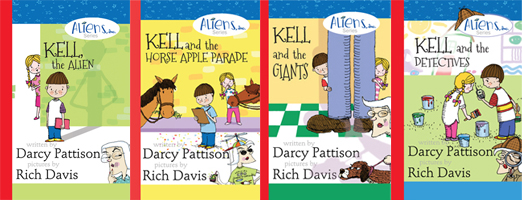
Last Friday, I wrote 4000 new words on my WIP novel. That’s a great day for me. But it was only possible because Thursday was a planning day.
When I work with students and teachers, I encourage lots of prewriting. My book, Writing for the Common Core, is essentially a book of prewriting activities. Here’s the thing: as professional writers, we know that our best writing comes with revision. That’s what students need to do, also: revise. However, that often devolves into merely copying a piece and cleaning up handwriting, especially in the lower grades. True revision, a re-envisioning of how to word something or the content to include/exclude, is hard to achieve in a 50-minute class.
Instead, I ask teachers to provide multiple prewriting activities. By giving students a rich and varied prewriting experience, they come to the first draft more likely to produce something worthwhile.
That’s what I did last Thursday, lots of prewriting.
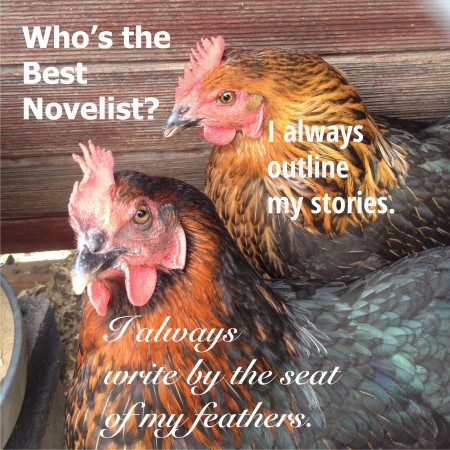
Setting. One important thing for me was to locate my story on the slopes of Mt. Rainier. I used Google Earth to track the roads where my characters would be traveling. Using the program’s tools, I measured distances as the crow flies and distances along roads, so I knew how long each drive (and potentially chase scene) would take. I switched to the aerial view to look at the landscape–mostly wooded with some open areas.
Sensory Details. Once I knew where this section of the story would happen, I concentrated on the sensory details. What would they see, hear, touch, taste and feel? What would the day’s weather be like? Rainy, snowy, sunny, windy? Along with that, I thought about the mood of the events. Would the characters be frantic, excited, hopeful, angry, or bored?
Scenes. I also took time to sketch out the structure of a couple scenes. Scenes need a beginning, middle, end; add in conflict and a pivot or turning point; stir with some great emotional development. By planning ahead, I knew the general outline of what would happen.
Flexibility. With all the planning, though, I approached the writing with flexibility and let the moment carry the story forward. I “mostly” knew what I would write, but it always surprises me how much it changes and develops as I write. It’s never exactly what I planned; it’s usually better.
I’m not really an outliner; but I don’t write by the seat of my pants either. Instead, I need this half-way place, where I do rich prewriting activities and halfway plan, and then see where it all takes me. HOW you say something is everything. It’s not just what the story is or how well you plot. For me, the important thing is how you say it. What word choices do you make and why? What sentence structures and why? What pacing and why? The true writing happens when I write. But I love the prewriting because it enables me to get 4000 words done in a single day. Well, really, that was two days work: one to prewrite and one to write. Either way you count it, that was a couple great chapters to put behind me.
Blog: Just the Facts, Ma'am (Login to Add to MyJacketFlap)
JacketFlap tags: scenes, Add a tag
Here are some things you need to think about when you transition to another scene.
http://nelsonagency.com/the-pesky-scene-break/
Blog: Just the Facts, Ma'am (Login to Add to MyJacketFlap)
JacketFlap tags: scenes, Add a tag
How to make your scenes, the building blocks of your story, the best they can be.
http://ingridsnotes.wordpress.com/2014/07/01/4-tips-for-writing-great-scenes/
Blog: Just the Facts, Ma'am (Login to Add to MyJacketFlap)
JacketFlap tags: scenes, Add a tag
We all want to write great scenes that keep our readers engaged.
http://ingridsnotes.wordpress.com/2014/07/01/4-tips-for-writing-great-scenes/
Blog: Just the Facts, Ma'am (Login to Add to MyJacketFlap)
JacketFlap tags: writing, scenes, Add a tag
We've all heard this advice, but how do you write it?
http://www.adventuresinyapublishing.com/2014/06/the-real-meaning-of-show-dont-tell-and.html
Blog: OUPblog (Login to Add to MyJacketFlap)
JacketFlap tags: Books, scenes, odyssey, iliad, the odyssey, powell, slideshow, barry, Humanities, Homer, Editor's Picks, *Featured, Art & Architecture, Images & Slideshows, Classics & Archaeology, the iliad, OUP USA HE, Barry B. Powell, ancient greek art, Ancient Roman Art, OUP USA Higher Ed, kylikes, polyphemus, Add a tag
The Ancient Greeks were incredibly imaginative and innovative in their depictions of scenes from The Odyssey, painted onto vases, kylikes, wine jugs, or mixing bowls. Many of Homer’s epic scenes can be found on these objects such as the encounter between Odysseus and the Cyclops Polyphemus and the battle with the Suitors. It is clear that in the Greek culture, The Odyssey was an influential and eminent story with memorable scenes that have resonated throughout generations of both classical literature enthusiasts and art aficionados and collectors. We present a brief slideshow of images that appear in Barry B. Powell’s new free verse translation of The Odyssey.
Barry B. Powell is Halls-Bascom Professor of Classics Emeritus at the University of Wisconsin, Madison. His new free verse translation of The Odyssey was published by Oxford University Press in 2014. His translation of The Iliad was published by Oxford University Press in 2013. See previous blog posts from Barry B. Powell.
Subscribe to the OUPblog via email or RSS.
Subscribe to only classics and archaeology articles on the OUPblog via email or RSS.
The post Scenes from the Odyssey in Ancient Art appeared first on OUPblog.
Blog: Ingrid's Notes (Login to Add to MyJacketFlap)
JacketFlap tags: Scenes, Writing Craft, Dramatic Action, scene building, Reader Expectations, Protecting Your Characters, scene writing tips, Writing great scenes, Add a tag
We all want to write scenes that grip our readers and keep them glued to the page! Easier said than done, right? Well, here are four tips that I try to keep in mind every time I sit down to craft a scene. They aren’t 100% fool-proof, but they often help me find that extra oomph to make my scene’s sing.
 1) Make Sure Your Scene Has Dramatic Action.
1) Make Sure Your Scene Has Dramatic Action.
The number one reason a scene falls flat is because it doesn’t have any dramatic action. Dramatic action is the action the protagonist takes to resolve the problem he has suddenly been faced with.
In STORY, Robert Mckee talks about dramatic action as “story events” and defines them as an “event that creates a meaningful change in the life situation of a character and is expressed and experienced in terms of a value and achieved through conflict.”
Well plotted stories are built on stringing together the scenes that have dramatic action. These are the important moments within the character’s life that move the plot forward. For example, we seldom see a character go to the bathroom or sleep, because there’s no dramatic action in these moments. Instead, we pick the scenes that are the most exciting and meaningful for the reader to read.
 2) Is There a Significant Emotional Change in the Scene?
2) Is There a Significant Emotional Change in the Scene?
A great way to tell if your scenes have dramatic action is to check and see if there’s a significant emotional change. If the character starts the scene happy and leaves it happy, nothing has happened. But if a character starts happy and leaves sad, then something has happened in the scene to change their life situation and make them sad.
You can track the emotion of your scene by drawing emotion faces (happy faces, frowning faces) at the opening and closing of your scenes. The emotion should reflect the emotion your character carries into the scene, and the emotion the character carries out of it in when it’s over. If the emotion-face is the same, for example both are grumpy faces, then you don’t have any dramatic action in the scene. This indicates that the scene may need to be cut or revised.
Setting up expectations helps the reader to feel the emotional change in a scene. If we know what a character wants and expects as she enters a situation, the reader becomes more invested. They want to see if the character succeeds or fails. You won’t have any reversals and surprises if you haven’t set up any expectations for the reader.
It’s much more exciting to watch a scene where a character scales a cliff if we know he’s afraid of heights, or we know his family is trapped at the top, or we know he thinks he can’t do it. It’s rewarding to see the character defy his fear. It adds tension if we know each misstep means he’s one step further away from saving his family from that fire-breathing dragon above (of course … you’ve got to set that up that dragon!).
 4) Stop Protecting Your Characters
4) Stop Protecting Your Characters
Even though we’re told to “torture our characters” it’s really common for us to protect them instead. Have you ever written as scene and decided to:
- Have an important conversation interrupted by another character/event.
- Had a character freeze up and avoid talking about their feelings in internal monologue.
- Had your character avoid asking an important question? Or had another character avoid answering it?
- Hinted to something, not once, but over and over and over again, and never unveiling the truth until late in the book.
- Bailed your character out of a situation before it reeeeeeally got tough?
- Avoided writing a scene because you the author felt uncomfortable?
All of that, is protecting your character (or in the example of the last one, yourself). The most common culprit is interruption. What’s happening is we start a scene, but the second it gets to the tough questions or uncomfortable conflicts, we bail our characters out of the scene and ask our readers to wait.
Sometimes we think we’re creating mystery and tension by drawing out the answers to questions, or avoiding the main conflicts. In real life we absolutely avoid questions and conflicts. But in drama … well, we want the drama!
Don’t cut off the scene before it gets going. Don’t avoid the dramatic action!
Stop protecting your character by allowing her to wander, avoid, and be bailed out of situations. Lock your characters in a room and make them deal with their conflicts! Be brave and get to the guts of the scene.
Happy scene-writing everyone!
Blog: Just the Facts, Ma'am (Login to Add to MyJacketFlap)
JacketFlap tags: writing, scenes, Add a tag
A scene is more than simply having the action happen in only one location.
http://cynthialeitichsmith.blogspot.com/2013/09/guest-post-helen-hemphill-on-writing.html
Blog: Darcy Pattison's Revision Notes (Login to Add to MyJacketFlap)
JacketFlap tags: novel revision, fiction techniques, fiction, plot, characterization, dialogue, scenes, mood, creative nonfiction, Add a tag
START YOUR NOVEL
Six Winning Steps Toward a Compelling Opening Line, Scene and Chapter- 29 Plot Templates
- 2 Essential Writing Skills
- 100 Examples of Opening Lines
- 7 Weak Openings to Avoid
- 4 Strong Openings to Use
- 3 Assignments to Get Unstuck
- 7 Problems to Resolve
All those fiction techniques you’ve spent time mastering — dialogue, description, setting, mood, scenes, characterization, and plot — are equally useful in writing nonfiction. Yes, there is more leeway in nonfiction than in the last twenty-five years, but publishers still value creative nonfiction or fiction written with fiction techniques.
For example, I have a new nonfiction coming out next year, Kentucky Basketball: America’s Winningest Teams (Rosen, 2014). I searched and searched for an interesting opening to the story, until I found a scene that was worthy of describing.
It was Valentine’s Day, 1938. Packed into the University of Kentucky Alumni Gym were over 4000 people, some sitting in windows, others literally hanging from the rafters. The UK Wildcat basketball team led top-ranked Marquette University team by 10 points.
It’s an exciting rivalry game, early in the history of the basketball program at Kentucky. Fiction techniques dictated that I set the scene immediately. Then I use sensory details to fill in the scene to describe the fast-paced last few minutes. Joe “Red” Hagan shoots a long 49-foot field goal from near the half-court line. When Marquette missed three more times, it becomes the winning score. Then, the interesting part started. In the audience was “Happy” Chandler, governor of Kentucky. He was so excited by the win, and especially Red’s winning shot, that he called for a hammer and nail. He rushed onto the court and at the spot from which Red shot, Chandler hammered a nail into the floor to commemorate the moment.
It’s stuff of legends. And it deserved a full scene, which meant fiction techniques.
Research Details for NonFiction: Think Fiction
This means that while I was researching the nonfiction topic of Kentucky basketball, I was really looking for a certain type of information.
Scenes. I look specifically for scenes with a beginning, middle with conflict, and ending. It needs to be something fun and interesting, a specific event.
Details. Next, I look for details. Here’s a fact: the basketball arena was meant to seat 2500, but 4000 fans were in attendance. A newspaper article of the times specifically said that fans were literally sitting in windows and hanging from the rafters. I look for numbers, colors, sizes, shapes, extended descriptions, and other specific details. These will all help the story come alive.
Timelines. The timeline of the basketball game was important to lay out and newspaper reports were helpful. The details of the first half were important to understand, so I could focus on the last three minutes.
Personalities or Characters. This story is made richer by the presence of Happy Chandler, governor of Kentucky. What a happy thing that he was named Happy! It added to the appeal of the story that the governor with such a nickname was so Happy that he did something unexpected.
Unexpected. The story is interested because of the governor’s unexpected reaction. Stories of last-minute wins are commonplace, even if in the moment it feels like a miracle. By itself, Red Hagan’s shot isn’t remarkable enough to include in a book like this. But add to that the unexpected hammer and nail, and it becomes a remarkable story of a fan who wanted to acknowledge a miraculous shot. That’s why this story made it into the book’s introduction, surprise.
Research and document all your research; but while you’re researching, think fiction techniques. And your nonfiction article will become an interesting story that both informs and entertains.
Blog: Just the Facts, Ma'am (Login to Add to MyJacketFlap)
JacketFlap tags: point_of_view, scenes, Add a tag
How to handle scene transitions when you have more than one point of view.
http://blog.janicehardy.com/2013/04/handling-scene-transitions-with.html
Blog: Just the Facts, Ma'am (Login to Add to MyJacketFlap)
JacketFlap tags: middle_grade, young_adult, scenes, Add a tag
Author Nancy Kress shows how to write your novel scene by scene.
http://childrenspublishing.blogspot.com/2013/04/nancy-kress-on-how-to-get-out-of-slush.html
Blog: Just the Facts, Ma'am (Login to Add to MyJacketFlap)
JacketFlap tags: plot, scenes, Add a tag
How to build your story through a series of causes and effects.
http://childrenspublishing.blogspot.com/2013/01/three-ways-cause-and-effect-can-build.html
Blog: Just the Facts, Ma'am (Login to Add to MyJacketFlap)
JacketFlap tags: revisions, scenes, Add a tag
In addition to self-editing your overall book, you also need to examine it scene-by-scene.
http://www.mitaliblog.com/2008/10/ten-tips-about-writing-race-in-novels.html
Blog: Darcy Pattison's Revision Notes (Login to Add to MyJacketFlap)
JacketFlap tags: story, novel, scenes, chapter, novel revision, opening, start, lines, begin, Add a tag
Today is a compilation of previous posts on the topic of how to open a story or novel. These are among the most popular posts here on Fiction Notes, so I gathered them in one place for you.
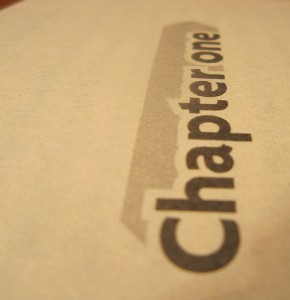
- 12 Ways to Open Your Story: The Story in Miniature
- First Page: An Editor Discusses Why It Is Important
- Prophetic Openings: How to Set Up the Ending at the Start
- Openings: 5 Ways they Go Wrong
- How to Improve Your Weak Opening
- SCENE 19: Special Scenes: Openings
- 4 Goals for the Opening Chapters of Your Novel
- Just Write It: Stop Second Guessing until You Revise
- 9 Tips on Opening Lines & Opening Chapters of Your NaNoWriMo Novel
Blog: Just the Facts, Ma'am (Login to Add to MyJacketFlap)
JacketFlap tags: revisions, scenes, Add a tag
How to decide which scenes can and should go when you revise.
http://notenoughwords.wordpress.com/2012/01/30/project-2012-scene-selection-what-to-throw-and-what-to-keep/
Blog: Darcy Pattison's Revision Notes (Login to Add to MyJacketFlap)
JacketFlap tags: creative writing, character, plot, novels, scenes, prompt, how to write, Add a tag
We’re done! But I thought you might like a re-cap and a table of contents.
The 31-day Think Like a Writer series challenges writers to write at least 750 words each and every day for a month. I used the website 750words.org, but you can do it with pencil and paper or on your computer. These creative writing prompts are meant to be “morning pages” or practice in Thinking Like a Writer.
TABLE OF CONTENTS
- Observe the world around you
- Observe Sensory Details
- Noses: Observe Characters
- Make Your Characters Move
- How to Create a Mood with Sensory Details
- Discover Your Passions
- Be Mean to Your Character
- How Old is Your Character?
- Subtext: What is this story really about?
- Write in Scenes
- Give Your Character Something to Hold
- Emotion from a Photo
- 3 Ways to Handle Time in a Novel
- Titles that Readers will Love
- Make an Image become a Symbol
- What what you are SCARED to write
- Everything is Worse and Worse
- Writers Need to Whine Sometimes
- Found Object Stories
- Set the Scene: Panorama
- Set the Scene: Zoom
- Set the Scene: Scan
- Omniscient POV
- 1st Person POV
- 3rd Person POV
- Different Perspectives for Different Audiences
- Before and After: Reveal Character
- Secrets and Letters
- The Other Side of the Story
- Unlovable Characters
Blog: Young Adult (& Kid's) Books Central (Login to Add to MyJacketFlap) JacketFlap tags: moles, count, 100, Masayuki Sebe, one hundred, count together, learn to count, review, children, birds, animals, counting, sheep, scenes, fish, elephants, mice, ants, colorful, Add a tag
0 Comments on Review: Let's Count to 100! by Masayuki Sebe as of 1/1/1900
Add a Comment
Blog: Just the Facts, Ma'am (Login to Add to MyJacketFlap) JacketFlap tags: scenes, writing, Add a tag
Tips to bring your scenes to life.
0 Comments on Scenes as of 1/1/1900
Add a Comment
Blog: Elizabeth Varadan's Fourth Wish (Login to Add to MyJacketFlap) JacketFlap tags: Irish history, editing, scenes, writing craft, revising, Add a tag
 I think I got over-ambitions with my recovering foot. I did not accomplish everything on my list in my last post as soon as I meant to. Over about three days, I did get those three poems sent out, and I rewrote a short story for a fiction contest and entered it. I did visit websites, etc. for agents I want to send my MG mystery to, and made my list. And then I just got plain tired. I will spare you the details of foot excercises three times a day, 20 minutes each time. But those exercises, plus walking around a little, really wore me out. I think I got over-ambitions with my recovering foot. I did not accomplish everything on my list in my last post as soon as I meant to. Over about three days, I did get those three poems sent out, and I rewrote a short story for a fiction contest and entered it. I did visit websites, etc. for agents I want to send my MG mystery to, and made my list. And then I just got plain tired. I will spare you the details of foot excercises three times a day, 20 minutes each time. But those exercises, plus walking around a little, really wore me out.So, I've been reading again. Not fiction, because I think I reached "fiction glut" rather than "reader glut" last week. Instead, I've been re-visiting books on the writing craft and doing some more research for my current WIP under revision, my MG ghost story set in 1919 Sacramento. My characters are Irish-Americans, so I've been especially soaking in anything Irish, and the book I just finished reading (and thoroughly enjoying) is Thomas Cahill's How the Irish Saved Civilization, a wonderfully written account in a style that makes history truly exciting to read. The writing books I've been poring over are: Self-editing for Fiction Writers, by Renni Browne and Dave King, and Novelist's Essential Guide to Crafting Scenes, by Raymond Obstfeld. The latter is really for writers of adult fiction, but, except for the chapters on murder mysteries and sex scenes, the advice and examples are superb for children's writers as well. Both books are good. I've read them before, they are part of my library, but you never can revisit a good book on the writing craft too many times. So, now the foot is better, the energy is back, and it's forward and on to my revision of Granny's Jig, and query letters for Imogene and the Case of the Missing Pearls -- although my computer time will be in smaller doses for a few days. (I have learned my lesson.) 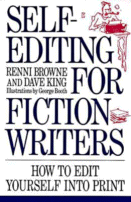 Hope all Hope all
7 Comments on The Best Laid Plans, last added: 8/16/2011
Display Comments
Add a Comment
Blog: Kristi Helvig YA Author (Login to Add to MyJacketFlap) JacketFlap tags: writing, scenes, chapters, valerie, Add a tag
First off, Lacey was interviewed! Read her interview at Simon Hay's blog!
8 Comments on Chapters Vs Scenes, last added: 3/23/2011
Display Comments
Add a Comment
View Next 15 Posts |




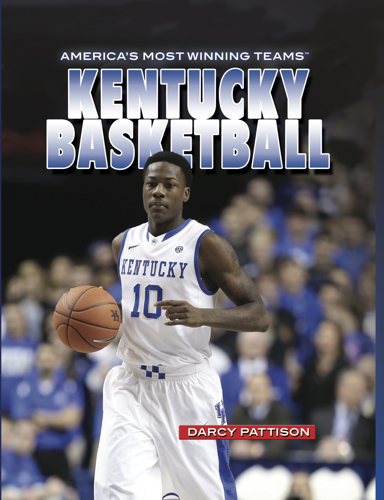




Just wrote a scene where the girls are in the bathroom. So funny to read this afterwards. Hope the revision is coming along.
My problem is protecting my characters. I like them so much that I don’t want to put them through the pain.
I know what you mean Mel! It’s hard to torture them!
LOL! Well, if you’ve got some dramatic action going on in that bathroom – keep it! :)